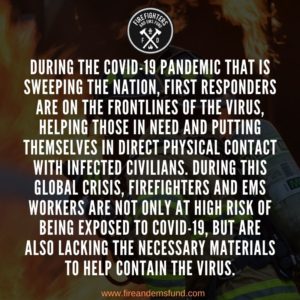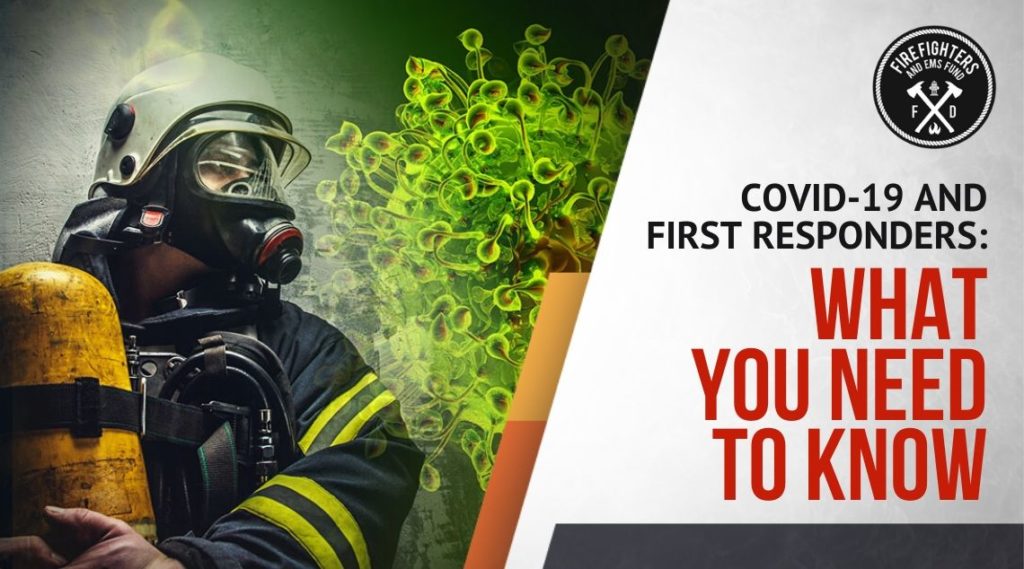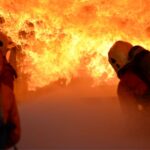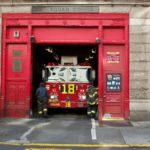Firefighters and EMS workers are always prepared to dive into a crisis. In their industry, a call can range from natural disasters such as tornadoes, to car crashes and other emergencies. In the event of a global pandemic, the public relies on them to not only care for affected individuals, but also play a role in the containment of infectious diseases. During the COVID-19 pandemic that is sweeping the nation, first responders are on the frontlines of the virus, helping those in need and putting themselves in direct physical contact with infected civilians. During this global crisis, firefighters and EMS workers are not only at high risk of being exposed to COVID-19, but are also lacking the necessary materials to help contain the virus.
An interactive map from the New York Times ranks these first responders as high-exposure-risk professions, right behind police officers and hospital workers.
COVID-19, a highly contagious virus that spreads from person-to-person contact, can be easily caught by workers in the emergency industry. Over 85,356 people are currently infected in the United States. The San Antonio Fire Department, one of the first to confront the virus head on, was called in to transport cruise ship passengers that were potentially infected with the virus to a military facility earlier in March.

In Kirkland, WA, more than 25 firefighters have been quarantined after responding to a call of cases of the virus at a local care center. An FDNY EMT as well as firefighters in Alameda, CA and San Jose, CA both tested positive for the virus. In response to the influx in cases, Firefighters and EMS across the country are implementing new tactics to prevent the spread of COVID-19, both in the community and among each other. In an article published by firehouse.com, Illinois Fire Chief Gary Ludwig advised his staff to continue the use of appropriate guideline measures, and practice extreme caution. In order to prevent exposure to multiple staff members, only one serviceperson should approach the patient at a time, while others keep their distance. Use of PPE (personal protective equipment) is mandated as usual, and includes use of gowns, masks, and gloves. It has been recommended that when appropriate, personnel remain at least six feet from a patient to not only reduce the risk of exposure, but also the use of disposable PPE. In addition to these new protocols, Ludwig also stressed the importance of proper decontamination of all gear and equipment. In an effort to prepare for the potential influx of cases, his department purchased two new electromagnetic sprayers to aid with decontamination.
Unfortunately, expensive new equipment, and even basic preventative equipment, is not a reality for most firehouses and EMS workers. Lack of funding throughout the country is a major issue for first responders. Countless firehouses and EMS services have had to cut their staff and rely on volunteers in order to serve their communities, and even then are left with aging and broken equipment. The tools for responding to a COVID-19 call includes low-cost essentials, like gowns, gloves, N-95 masks, and even those can be difficult to acquire. With the widespread public purchasing of masks amidst the outbreak, first responders are left no choice but to reuse disposable equipment when coming into contact with infected citizens, leaving them at a higher risk of contracting the virus. Add this to the high mental and physical stress of their jobs, and first responders are even more likely to become ill while fighting the pandemic. If they don’t have the equipment they need, firefighters and EMS workers could become sick, or they could become carriers, spreading the virus to the weak and vulnerable people they care for in their community.
The need for support in our first responder community is at an all-time high. From funding to support mental and physical health initiatives to proper equipment upkeep, firefighters and EMS workers are lacking the resources to keep both themselves, and the public healthy. For now, first responders are making due with what they have, and preparing for the upcoming battle against COVID-19.
Some people are quick to make initial assumptions about nature of grassroots organizations, but largely do not have a thorough understanding about the way they conduct their selves and the growing need for groups like theirs. Read more here to understand the deeper role of a Fire & EMS Grassroots Movement now and in the future.









